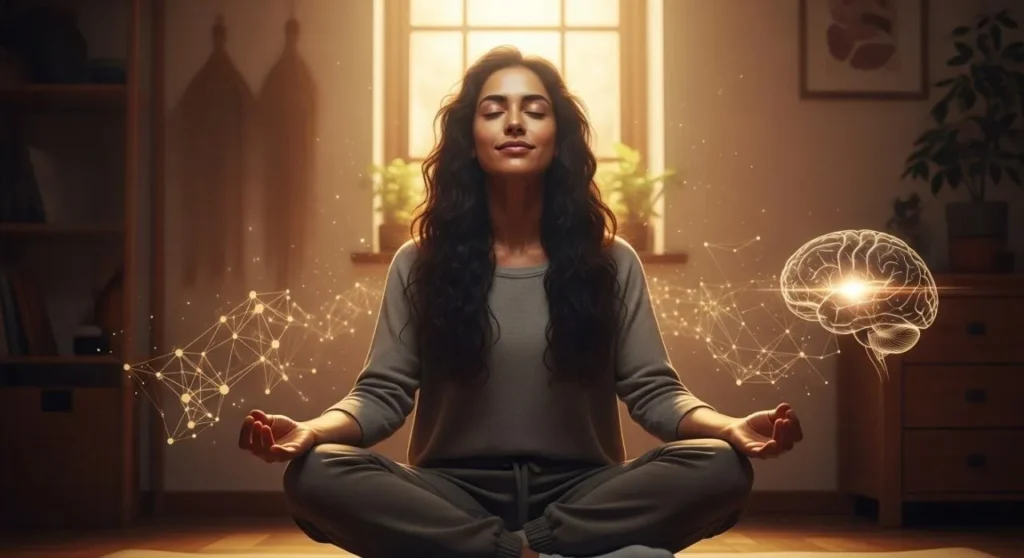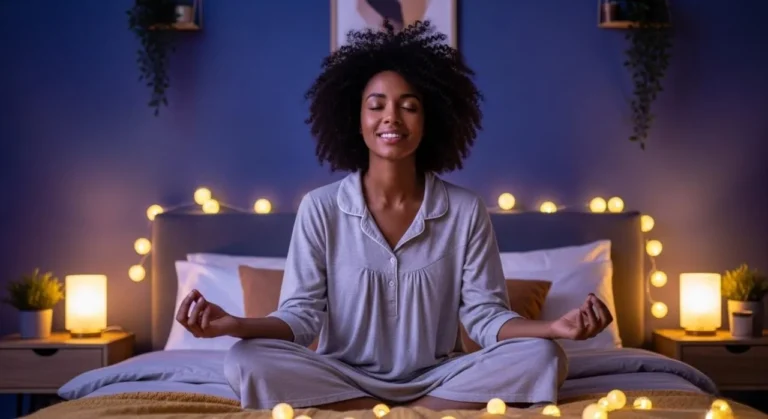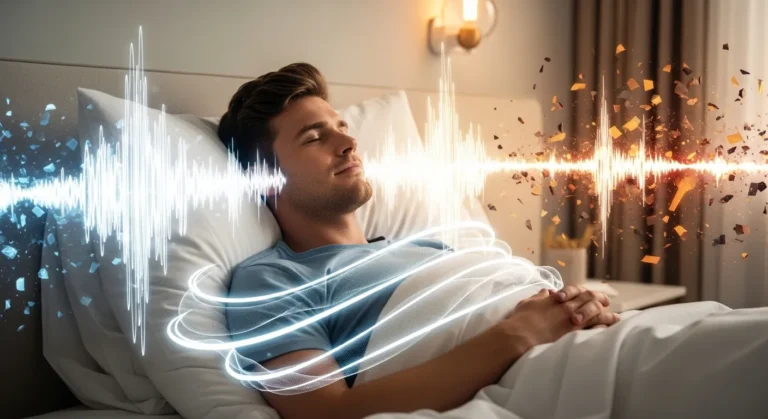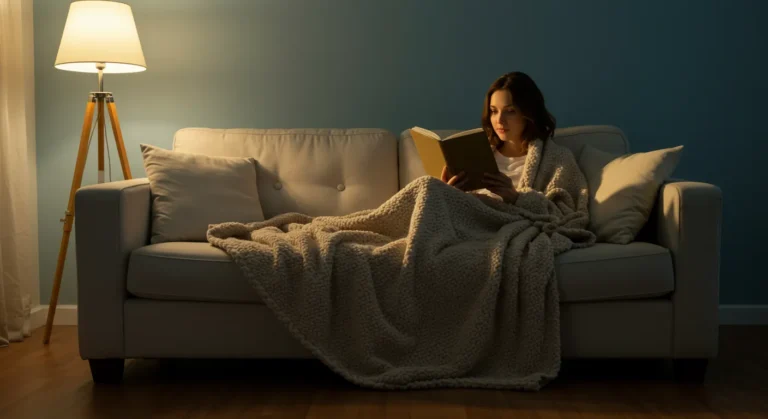12 Ways to Biohack Sleep and Wake Up Like a Champion

Last Tuesday, I had one of those nights. You know the type – lying in bed at 2 AM, mind racing about tomorrow’s presentation, checking the clock every twenty minutes, calculating how many hours of sleep I’d get if I fell asleep “right now.” Sound familiar?
Here’s what changed everything for me: I stopped trying to force sleep and started engineering it instead. That’s what it means to biohack sleep – using science-backed strategies to optimize your sleep architecture, not just hope for the best.
After years of working with high-performers who thought they were “just bad sleepers,” we’ve discovered something remarkable: there’s no such thing as a bad sleeper, only people who haven’t found their optimal sleep formula yet. The difference between tossing and turning versus falling asleep in minutes often comes down to a few key variables that most people never think to optimize.
What you’re about to learn isn’t just another list of generic sleep tips. These are the essential sleep hacks that transform your nights from a gamble into a predictable, restorative experience that sets you up for peak performance every single day.
Key Takeaways
✓ Sleep architecture optimization goes beyond just sleep duration
✓ Environmental engineering can dramatically improve sleep quality
✓ Circadian rhythm alignment is more powerful than most sleep aids
✓ Pre-sleep protocols prime your nervous system for deep rest
✓ Recovery tracking helps you fine-tune your personal sleep formula
✓ Strategic supplementation can accelerate results when used correctly
Why Traditional Sleep Advice Fails
Let’s be honest – you’ve probably tried the basic advice already. Go to bed earlier, avoid caffeine, keep your room cool. Yet here you are, still struggling with sleep quality.
The problem with generic sleep advice is that it treats everyone the same. But your sleep needs are as individual as your fingerprint. Your chronotype (natural sleep-wake preference), stress levels, lifestyle demands, and even your genetics all influence what will actually work for you.
Traditional approach: Follow the same rules everyone else follows
Biohacking approach: Experiment systematically to discover your optimal sleep formula
The Hidden Science of Sleep Optimization
Recent sleep research has revealed that quality sleep isn’t just about feeling rested – it’s literally when your brain detoxifies, your muscles repair, and your memory consolidates. During deep sleep, your brain’s glymphatic system flushes out metabolic waste, including the proteins associated with Alzheimer’s disease.
When you biohack sleep effectively, you’re not just improving rest – you’re optimizing cognitive performance, emotional regulation, immune function, and even longevity. Studies show that people who consistently get high-quality sleep live an average of 2.5 years longer than poor sleepers.
12 Game-Changing Sleep Hacks for Adults
1. Master Your Light Environment
The Science: Light is the primary driver of your circadian rhythm. Even small amounts of blue light can suppress melatonin production by up to 50%.
The Hack: Create a “light gradient” throughout your day:
- Morning: Get 10-15 minutes of bright light within 30 minutes of waking
- Afternoon: Maximize natural light exposure during work hours
- Evening: Dim lights 2-3 hours before bed
- Night: Use blackout curtains or a sleep mask for complete darkness
Pro tip: If you must use devices at night, use blue light blocking glasses or apps like f.lux, but the real game-changer is eliminating screens entirely 1 hour before bed.
2. Temperature Biohacking
The Science: Your core body temperature naturally drops 1-2 degrees as you prepare for sleep. You can accelerate this process.
The Hack: Keep your bedroom between 65-68°F (18-20°C), but here’s the advanced strategy:
- Take a hot bath or shower 90 minutes before bed
- The rapid cooling afterward triggers sleepiness
- Use cooling mattress pads or weighted blankets for personalized temperature control
- Keep your feet warm while your core cools (wear socks to bed)
This temperature manipulation can reduce the time it takes to fall asleep by up to 36%.
3. Strategic Caffeine Timing
The Science: Caffeine has a half-life of 6-8 hours, meaning it stays in your system much longer than most people realize.
The Hack: Follow the “3-2-1 Rule”:
- No caffeine 8+ hours before bed
- No large meals 3 hours before bed
- No liquids 2 hours before bed
- No screens 1 hour before bed
Advanced strategy: If you’re caffeine-sensitive, try having your last cup before 12 PM. Some people with specific genetic variants (CYP1A2 gene) metabolize caffeine much slower.
4. The Power Nap Protocol
The Science: Strategic napping can boost alertness without interfering with nighttime sleep, but timing is everything.
The Hack: Perfect nap timing based on your sleep debt:
- 10-20 minutes: Pure alertness boost without grogginess
- 60 minutes: Includes slow-wave sleep for cognitive processing
- 90 minutes: Full sleep cycle for maximum restoration
Never nap after 3 PM or you’ll disrupt your nighttime sleep architecture.
| Nap Duration | Best For | Timing | Recovery Effect |
| 10-20 min | Quick energy boost | 1-3 PM | Alertness without grogginess |
| 60 min | Memory consolidation | Before 2 PM | Cognitive enhancement |
| 90 min | Full recovery | Weekend mornings | Complete restoration |
5. Breathwork for Sleep Induction
The Science: Controlled breathing activates your parasympathetic nervous system, signaling to your body that it’s safe to sleep.
The Hack: The 4-7-8 breathing technique:
- Inhale through your nose for 4 counts
- Hold your breath for 7 counts
- Exhale through your mouth for 8 counts
- Repeat 4-6 cycles
This technique can induce sleep in as little as 60 seconds by rapidly shifting your nervous system into rest mode.
Alternative: Box breathing (4-4-4-4 pattern) works well for people who find 4-7-8 too intense.
6. Optimize Your Sleep Position
The Science: Your sleep position affects everything from breathing to spinal alignment to brain detoxification.
The Hack: Side sleeping (particularly left side) optimizes:
- Lymphatic drainage
- Reduced snoring
- Better digestion
- Improved circulation
Advanced positioning: Use a pillow between your knees to maintain spinal alignment, and ensure your pillow height keeps your neck in neutral position.
7. Create a Sleep Sanctuary
The Science: Your brain creates associations between your environment and sleep. A cluttered, multi-purpose bedroom confuses these signals.
The Hack: Bedroom optimization checklist:
- Reserve your bed for sleep and intimacy only
- Remove all electronics (including charging stations)
- Use blackout curtains and white noise machines
- Keep the room slightly cool and well-ventilated
- Choose calming colors (blues, greens, earth tones)
Pro insight: Your bedroom should feel like a retreat, not an extension of your office or entertainment center.
8. Meal Timing and Composition
The Science: What and when you eat directly impacts sleep quality through blood sugar regulation and neurotransmitter production.
The Hack: Strategic eating for sleep:
- Dinner: Finish 3 hours before bed, focus on protein and complex carbs
- Evening snack: If needed, try tart cherry juice, almonds, or turkey (natural melatonin sources)
- Avoid: Spicy foods, high-fat meals, and excessive sugar before bed
- Magnesium-rich foods: Dark chocolate, nuts, seeds, leafy greens
Advanced strategy: Some people benefit from intermittent fasting, with their eating window ending 4-5 hours before sleep.
9. Supplement Stack for Sleep
The Science: While lifestyle changes are primary, certain supplements can accelerate results when used strategically.
The Hack: Evidence-based sleep supplements (consult healthcare provider first):
- Magnesium Glycinate: 200-400mg, 30 minutes before bed
- Melatonin: 0.5-3mg, 2 hours before desired sleep time (less is often more)
- L-Theanine: 100-200mg for relaxation without sedation
- Glycine: 3g can improve sleep quality and reduce daytime fatigue
Important: Start with one supplement at a time to assess individual effects. Natural doesn’t always mean safe for everyone.
10. Morning Light Therapy
The Science: Your sleep quality tonight is determined by what you do when you wake up this morning. Light exposure within the first hour sets your circadian clock.
The Hack: Morning light protocol:
- Get outside within 30 minutes of waking
- 10-15 minutes of direct sunlight (no sunglasses)
- On cloudy days, use a 10,000 lux light therapy lamp
- Combine with light movement like walking
This single habit can advance your sleep phase, making it easier to fall asleep at night.
11. Stress-Proofing Your Sleep
The Science: Cortisol (stress hormone) and melatonin (sleep hormone) have an inverse relationship. High stress literally blocks good sleep.
The Hack: Evening stress-reduction protocol:
- Worry journal: Write down tomorrow’s concerns to get them out of your head
- Gratitude practice: List 3 things you’re grateful for from today
- Progressive muscle relaxation: Tense and release each muscle group
- Meditation: Even 5 minutes of mindfulness can lower cortisol
Advanced technique: Use heart rate variability (HRV) monitoring to track your nervous system’s readiness for sleep.
12. Track and Optimize
The Science: What gets measured gets managed. Sleep tracking helps you identify patterns and optimize your personal sleep formula.
The Hack: Track these key metrics:
- Sleep duration and efficiency
- Time to fall asleep
- Number of wake-ups
- Morning energy levels (1-10 scale)
- Previous day’s activities and their impact
Tools: Wearable devices like Oura Ring or WHOOP, or simple sleep diary apps.
Analysis tip: Look for patterns over 2-3 weeks rather than day-to-day variations.
Building Your Personal Sleep Optimization System
Here’s the reality: not every sleep hack will work for everyone. The key is systematic experimentation to find your optimal combination.
The 30-Day Sleep Biohacking Challenge
Week 1: Focus on sleep environment (temperature, light, sound)
Week 2: Optimize timing (bedtime routine, caffeine cutoff, meal timing)
Week 3: Add stress management and breathwork practices
Week 4: Fine-tune based on your tracking data and results
Red Flags to Watch For
Some signs your current approach isn’t working:
- Taking more than 20 minutes to fall asleep regularly
- Waking up multiple times per night
- Feeling tired despite 7-8 hours in bed
- Relying on multiple alarms to wake up
- Afternoon energy crashes
When to Seek Professional Help
If you’ve tried multiple sleep hacks consistently for 4-6 weeks without improvement, consider consulting:
- Sleep medicine specialist
- Functional medicine practitioner
- Mental health professional (for anxiety-related sleep issues)
Sometimes underlying conditions like sleep apnea, hormone imbalances, or undiagnosed health issues require professional intervention.
The Compound Effect of Sleep Optimization
When you consistently biohack sleep, the benefits compound exponentially. Better sleep leads to:
Cognitive Benefits: Improved focus, memory, decision-making, and creativity
Physical Benefits: Enhanced recovery, stronger immune system, better metabolism
Emotional Benefits: Increased resilience, better mood regulation, reduced anxiety
Performance Benefits: Higher productivity, sustained energy, peak performance
We’ve worked with clients who transformed their entire lives simply by prioritizing sleep optimization. The executive who went from 3 cups of coffee to 1 because her energy was naturally sustained. The athlete who broke personal records after optimizing recovery. The parent who found patience and joy again after finally getting restorative sleep.
The most important insight: Sleep isn’t time lost from productivity – it’s the foundation that makes everything else possible. When you biohack sleep effectively, you don’t just rest better; you live better.
Start with the environmental hacks (light, temperature, sleep sanctuary) since they provide the biggest impact with the least effort. Then gradually add the behavioral and physiological optimizations based on your individual response.
Ready to dive deeper into advanced biohacking strategies? Our comprehensive guide on optimizing your circadian rhythm reveals how to align your natural energy cycles for peak performance. And if you’re curious about the latest sleep technology and gadgets, check out our review of the best sleep tracking devices to accelerate your optimization journey.
Here’s to waking up feeling like the champion you’re meant to be.
FAQ
Q: How long does it take to see results from biohacking sleep? A: Most people notice improvements in sleep quality within 3-7 days of implementing environmental changes (light, temperature, sleep sanctuary). Deeper benefits like improved energy and cognitive function typically appear after 2-3 weeks of consistent practice.
Q: Can you biohack sleep if you have a irregular work schedule? A: Absolutely. Shift workers and people with irregular schedules can still optimize sleep quality by focusing on controllable factors like sleep environment, pre-sleep routines, and strategic light exposure. The key is consistency within your available sleep windows.
Q: Are sleep supplements safe for long-term use? A: Most natural sleep supplements like magnesium and melatonin are generally safe for most people when used appropriately. However, it’s best to consult with a healthcare provider, especially if you’re taking other medications. The goal should be to eventually rely primarily on behavioral and environmental optimizations.
Q: What’s the difference between sleep hacks and sleep hygiene? A: Sleep hygiene focuses on basic habits like regular bedtimes and avoiding caffeine. Sleep biohacking goes deeper, using scientific principles to systematically optimize sleep architecture, recovery, and performance through personalized strategies and tracking.
Q: How do I know which sleep hacks to try first? A: Start with environmental factors (light, temperature, sleep space) as they provide the biggest impact with minimal effort. Then address timing issues (caffeine, meals, bedtime routine). Finally, add advanced techniques like supplements or specialized breathing exercises based on your individual needs and responses.
Disclaimer: The information provided is for educational purposes only, not a substitute for professional medical advice. Always consult a healthcare professional.







